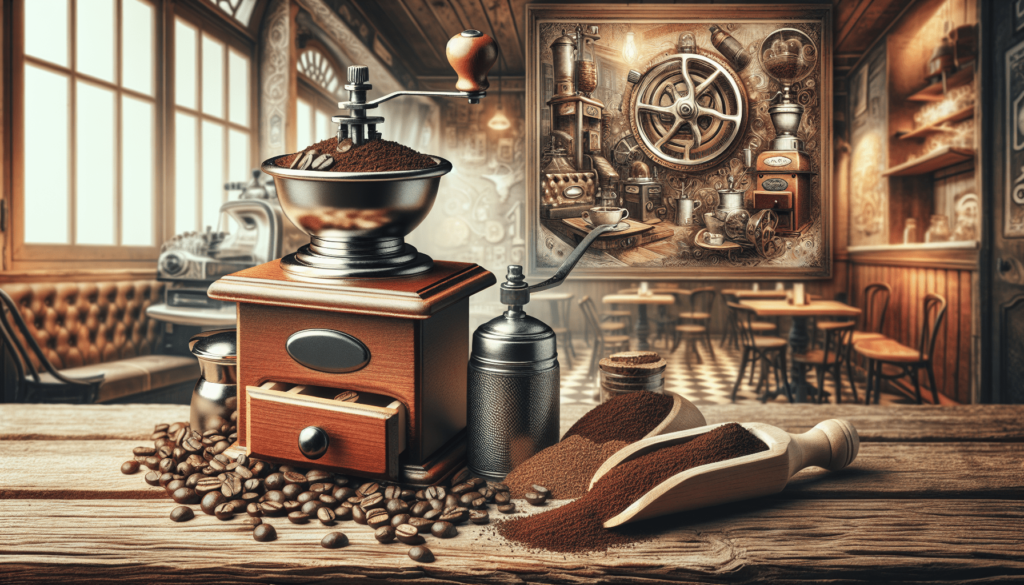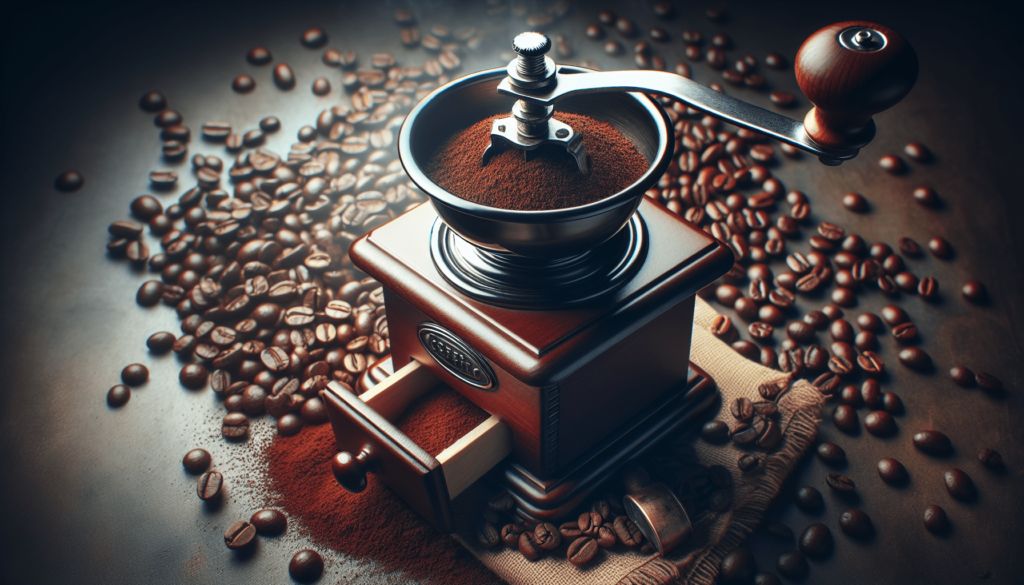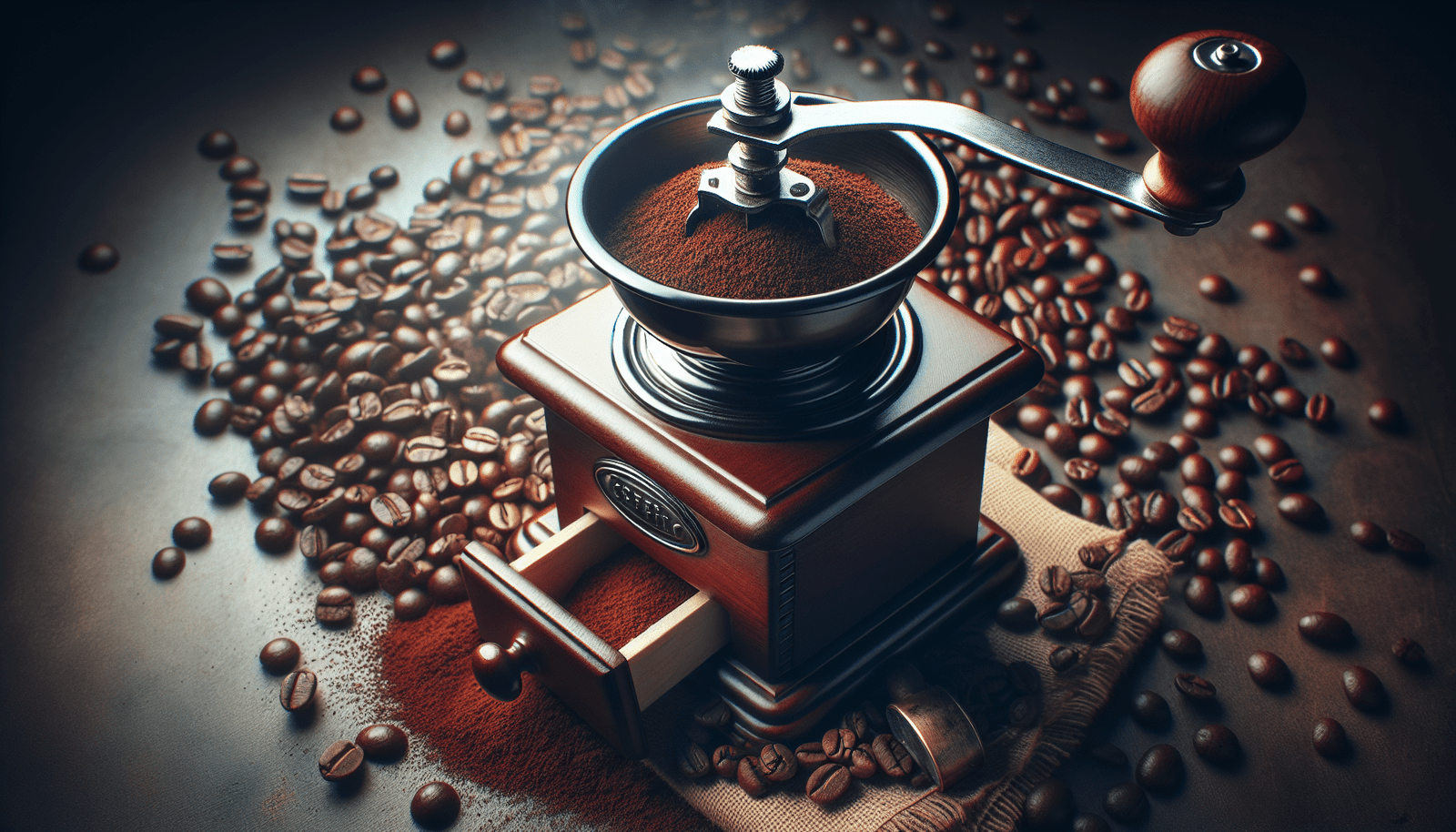You’ve just purchased your very own espresso machine and can’t wait to start brewing your favorite caffeinated beverages at home. But when it comes to making the perfect espresso, one crucial element you shouldn’t overlook is the grind size. Whether you prefer a bold and rich shot or a more delicate and smooth taste, the grind size plays a vital role in achieving that desired flavor profile. In this article, we’ll explore the different grind sizes for espresso and give you some tips on how to choose the right one to elevate your coffee experience to new heights. So grab a cup of your favorite joe and let’s dive into the world of espresso grind sizes!
Understanding the Importance of Grind Size
When it comes to making the perfect espresso, grind size plays a crucial role. It determines the rate of extraction, brew time, and ultimately, the flavor profile of your coffee. Achieving the perfect grind size can be challenging, but understanding its importance is the first step towards mastering the art of espresso extraction.
The Role of Grind Size in Espresso Extraction
Grind size directly affects the surface area of the coffee particles, which in turn influences the rate of extraction. If the grind is too fine, the water will struggle to flow through the coffee, resulting in over-extraction. Conversely, if the grind is too coarse, the water will flow too quickly, leading to under-extraction. Finding the right balance is essential for extracting the desirable flavors and aromas from the coffee grounds.
Effects of Grind Size on Brew Time and Extraction Rate
Grind size has a significant impact on both brew time and extraction rate. A finer grind will increase the surface area of the coffee particles, leading to a longer brew time and slower extraction. On the other hand, a coarser grind will decrease the surface area, resulting in a shorter brew time and faster extraction. Understanding these effects helps in achieving the desired flavor profile and maintaining consistency in each shot of espresso.
Balancing Extraction and Brew Time
Balancing extraction and brew time is crucial in order to achieve a well-rounded and flavorful espresso. The goal is to extract the coffee’s soluble compounds without over-extracting or under-extracting them. By adjusting the grind size, you can control the flow rate of water through the coffee bed, fine-tuning the extraction process to achieve the perfect balance. It’s a delicate dance that requires attention to detail and a bit of experimentation.
Factors to Consider when Choosing Grind Size
Choosing the right grind size is not a one-size-fits-all process. Several factors come into play when determining the ideal grind size for your espresso. Let’s explore some of these factors:
Bean Freshness
Freshness is key when it comes to coffee, and this holds true for espresso as well. The freshness of the beans can affect the grind size, as fresher beans tend to release more carbon dioxide during the brewing process. This gas can cause the coffee bed to expand, leading to channeling if the grind size is too fine. Adjusting the grind size to accommodate the freshness of the beans can help prevent this issue.
Coffee Roast Level
Different roast levels require different grind sizes to achieve optimal extraction. Lighter roasts tend to be denser and require a finer grind to fully extract their delicate flavors. On the other hand, darker roasts are less dense and benefit from a coarser grind to prevent over-extraction and excessive bitterness. Experimenting with various grind sizes based on the roast level of your coffee can help you find the perfect balance.
Machine Type and Pressure
The type of espresso machine you use, as well as its pressure capabilities, can influence the grind size selection. Machines with higher pressure, such as those with 9 bars or more, require a finer grind to slow down the flow rate and achieve proper extraction. On the contrary, machines with lower pressure may require a coarser grind to allow for adequate extraction within a reasonable brew time. Understanding your machine’s specifications is essential in determining the appropriate grind size.
Desired Espresso Flavor Profile
Ultimately, your desired flavor profile should guide your choice of grind size. If you prefer a sweeter and more balanced cup of espresso, you may opt for a slightly finer grind to accentuate the coffee’s natural sweetness. Conversely, if you prefer a bolder and more robust flavor, a coarser grind may be more suitable to highlight the coffee’s body and intensity. Experimenting with different grind sizes and noting the resulting flavor profiles can help you identify your personal preferences.

Grind Size Recommendations for Different Brewing Methods
While grind size preferences can vary for each individual, some general recommendations can serve as a starting point for different brewing methods. Let’s take a closer look at the grind size recommendations for popular espresso variations:
Turkish Coffee
For traditional Turkish coffee, an extremely fine grind is necessary to achieve the desired texture and strong flavor. The coffee should almost resemble a powder consistency, as this allows the coffee to dissolve fully in the water during the brewing process.
Moka Pot
Moka pot brewing requires a medium-fine grind, similar to table salt. This grind size allows for a balanced extraction and a rich, full-bodied flavor. Too fine of a grind can lead to over-extraction, while a coarser grind may result in under-extracted and weak coffee.
Espresso
Espresso typically calls for a fine to medium-fine grind, resembling granulated sugar. This grind size allows for a controlled extraction and balanced brew time. Adjusting the grind size slightly finer or coarser can help fine-tune the flavor profile based on personal preferences.
Aeropress
When using an Aeropress, a medium-fine to medium grind is usually recommended. This grind size allows for a balanced extraction and a clean, bright cup of coffee. Experimenting with the grind size can help achieve different flavor profiles, such as a bolder or more delicate cup.
Understanding Grind Size Consistency
Consistency is key when it comes to producing consistently delicious espresso shots. Grind size consistency directly impacts the extraction process and the resulting flavor profile. Here are some important points to consider:
Importance of Consistency in Espresso Extraction
Consistency in grind size ensures repeatability in the extraction process. When the grind size remains consistent, you can confidently adjust other variables, such as brew ratio and extraction time, knowing that the grind will provide a reliable starting point. This consistency translates into a more predictable and consistent flavor profile for your espresso.
Avoiding Under-extraction or Over-extraction
Inconsistent grind size can lead to inconsistent extraction, resulting in under-extracted or over-extracted espresso shots. Under-extraction produces sour and weak flavors, while over-extraction leads to bitter and harsh tastes. By maintaining a consistent grind size, you minimize the risk of these flavor inconsistencies and increase the chances of achieving a well-balanced shot.
Maintaining Consistent Grind Size for Reproducibility
Reproducibility is essential for baristas and home brewers alike. Consistently reproducing a desired flavor profile requires careful attention to the grind size. By keeping the grind size consistent, you can replicate successful extractions and maintain the same flavor characteristics over time. Consistency allows you to fine-tune other variables without second-guessing the impact of grind size on the final result.

Choosing the Right Grinder for Espresso
Investing in a quality grinder is a fundamental step towards achieving optimal grind size and consistency. There are two main types of grinders to consider: burr grinders and blade grinders.
Burr Grinders vs Blade Grinders
Burr grinders are the preferred choice for espresso enthusiasts due to their ability to produce consistently sized particles. They feature two serrated steel burrs that crush the coffee beans into uniform particles. On the other hand, blade grinders chop the coffee beans with a rotating blade, resulting in uneven particle size. Burr grinders offer greater control and precision in achieving the desired grind size for espresso.
Grinder Settings and Adjustability
Another important factor to consider when choosing a grinder is its adjustability. Some grinders offer a wide range of grind size settings, allowing for more precise adjustments to accommodate different brewing methods and personal preferences. Look for a grinder that provides incremental adjustments to ensure you can dial in the perfect grind for your espresso.
Investing in a Quality Grinder
While it may be tempting to skimp on the grinder and allocate more budget to the espresso machine itself, investing in a quality grinder is well worth it. A high-quality grinder not only ensures consistent grind size but also reduces heat transfer during the grinding process, preserving the delicate flavors of the coffee beans. It’s a long-term investment that will significantly enhance your espresso brewing experience.
Testing and Dialing In the Grind Size
Once you have acquired a suitable grinder and understood the importance of grind size, it’s time to experiment and dial in the perfect grind size for your espresso. Here’s a step-by-step approach to guide you through the process:
Starting with a Recommended Grind Size
Begin by following the general grind size recommendations for espresso. Based on your chosen brewing method, start with the recommended grind size setting on your grinder. This will serve as a starting point for further adjustments and allow you to evaluate the initial extraction.
Adjusting the Grind Size based on Extraction Time and Taste
To find the ideal grind size, you need to observe and evaluate the extraction time and taste. If the extraction is too fast, resulting in a weak and sour shot, the grind size is likely too coarse. In this case, adjust the grind setting slightly finer and reassess the extraction. Conversely, if the extraction is too slow, resulting in a bitter and over-extracted shot, the grind size is likely too fine. Adjust the grind setting slightly coarser and evaluate the extraction again. Fine-tuning the grind size and repeating the process will help you find the sweet spot.
Keeping Track of Grind Size Changes for Future Reference
As you experiment with different grind sizes, it’s important to keep track of your adjustments and their corresponding extraction results. Maintaining a log or note of the changes ensures you have a reference for future brews. This record-keeping helps you establish a baseline knowledge of how grind size impacts your espresso’s flavor profile and allows for easier adjustments in the future.
Common Mistakes to Avoid when Choosing Grind Size
While navigating the world of grind size, it’s crucial to avoid some common mistakes that can negatively impact your espresso’s flavor profile. Here are a few blunders to steer clear of:
Using Pre-ground Coffee
Pre-ground coffee may be convenient, but it lacks the freshness and control needed for optimal espresso extraction. Ground coffee begins to stale and lose its volatile aromatics shortly after grinding. To truly harness the potential of your espresso, invest in whole bean coffee and grind it just before brewing. This ensures maximum freshness and flavor.
Setting the Grinder Too Fine or Too Coarse
Adjusting the grinder to an extreme setting, either too fine or too coarse, can lead to poor extraction and unpleasant flavors. Experimenting with fine-tuning the grind size within a specific range is essential for achieving the desired flavor profile. Avoid the temptation to go to the extremes and find the middle ground that produces the best results.
Neglecting to Clean or Maintain the Grinder
A well-maintained grinder is essential to preserve grind size accuracy and prevent stale coffee residue from affecting the flavor of your espresso. Regularly cleaning and maintaining your grinder, following manufacturer guidelines, keeps the burrs or blades sharp and ensures consistent performance. Neglecting maintenance may lead to inconsistent grind size and compromised flavor in your espresso.
Experimenting with Different Grind Sizes
Beyond dialing in the perfect grind size, espresso enthusiasts often enjoy exploring the impact of small grind size adjustments on the overall flavor profile. Here’s how you can engage in the delightful world of experimentation:
Exploring the Impact of Small Grind Size Adjustments
Once you have achieved a well-balanced espresso shot with your chosen grind size, you can start experimenting by making minor adjustments to the grind size. These adjustments can be as small as a quarter of a turn on your grinder’s settings. By gradually fine-tuning the grind size, you can observe how different adjustments affect the extraction and flavor profile of your espresso.
Tasting Notes and Observing Differences in Extraction
As you experiment with various grind sizes, it’s important to taste each espresso shot and take notes of the nuances in flavor and aroma. Pay attention to acidity, sweetness, bitterness, body, and overall balance. This process will help you understand how different grind sizes impact the espresso’s final taste and allow you to refine your preferences.
Understanding Personal Preferences
While there are general guidelines to follow, every coffee lover has unique taste preferences. The beauty of experimenting with different grind sizes lies in discovering what suits your palate best. By exploring the impact and variations of grind size on your espresso shots, you can customize your brewing process to achieve a cup of espresso that truly resonates with your personal preferences.
Seeking Professional Advice and Resources
Espresso brewing is an intricate art and science that can benefit from professional advice and resources. Here are some ways to expand your knowledge and seek guidance:
Consulting Specialty Coffee Experts
Specialty coffee experts, such as baristas and professional roasters, can provide valuable insights and guidance on grind size selection. They have a wealth of knowledge and experience in extracting the best flavors from different coffee beans. Visiting specialty coffee shops, attending workshops, or even reaching out to experts online can significantly enhance your understanding of grind size and espresso extraction.
Joining Online Coffee Communities and Forums
Online coffee communities and forums are treasure troves of information for coffee lovers seeking guidance and support. Participating in discussions, asking questions, and sharing experiences can provide valuable perspectives and recommendations. Engaging with like-minded individuals can foster a sense of camaraderie and help you navigate the complexities of grind size selection.
Reading Books and Coffee Publications
Books and coffee publications offer a wealth of information on espresso brewing techniques and the role of grind size. They cover topics ranging from coffee origins and processing methods to extraction science and flavor profiling. Exploring literature written by industry experts and renowned coffee professionals can expand your understanding and inspire new approaches to brewing espresso.
Conclusion
Grind size is a crucial aspect of espresso extraction that should not be overlooked. By understanding its role and considering various factors such as bean freshness, coffee roast level, machine type, and desired flavor profile, you can make informed decisions when selecting the right grind size for your espresso. With the right grinder, diligent testing, and dialing in, you can achieve consistent and delicious espresso shots that cater to your unique taste preferences. Embrace the art of experimentation, seek guidance from professionals, and enjoy the journey of discovering the perfect grind size for your own personalized espresso experience.

